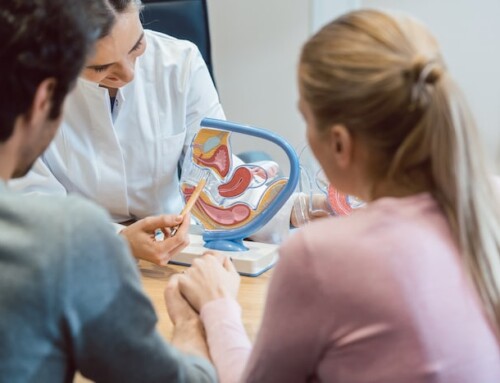Imagine the layout of the Team Miracle laboratory with our doctors at the Cyprus IVF Centre. In your mind’s eye it probably doesn’t contain anything beyond some equipment, medical staff, lights and maybe an incubator or two. It probably isn’t very big either. However, that laboratory layout and design is absolutely crucial to the successful outcome of IVF.
The History
Before the substantive research was done, labs were initially placed wherever was convenient within the hospital. Usually this meant places like unused operating rooms or hospital storage rooms. Basically, rooms which didn’t have any other purpose. However since then a lot more research has been carried out which has shown that the location of the laboratory plays a hugely important role within the IVF process. This has given us a clear understanding about the impact of many different factors on the development of the embryos.
When we think of the factors affecting the outcome of IVF, it’s natural to consider the physical factors first. Things like age, egg quality, sperm count – all of these things are what we intrinsically link to whether or not the IVF process is going to work. However, there are also other factors at play in the equation of success – and some are not what you may think.
Air Quality
As a first example, something as innocuous as the quality of the air in the lab can be crucial. Unseen dangers from the air can lurk anywhere. Bacteria, fungi and viruses can all travel through the air, along with volatile organic compounds (often found in paint) and these can all be harmful to the embryo. It makes sense that the air in the lab should be clean and pure, however laboratory air actually requires a far higher standard of cleanliness than previously understood.
At Cyprus IVF Centre, state-of-the-art HEPA filtration units have been inserted into the lab to purify the air in addition to specialist heating and cooling units.
The Ideal Situation
Four small letters spell out some crucial elements for the lab: HVAC. Otherwise known as:
– Heating
– Ventilation
– Air Conditioning
Ideally these factors should be able to exchange the air within the lab around 20 times per hour. The facilities within the Team Miracle laboratory allow an air exchange of 35 times per hour, even more than the recommended purification methods.
Other things can help the quality of the laboratory air, for example charcoal filters and high-efficiency air particulate filters which help to remove the bacteria and fungi. A powerful unit is needed to create sufficient pressure and this pressure must be kept at its highest in the embryology lab and lower as it reaches the outside corridor. The purpose of this gradient is quite logical – it prevents germs and chemicals from entering the airspace around the embryos. The laboratory environment also has restricted access and only the embryologists and our doctors can enter. This ensures that other staff members are not bringing contaminants into the carefully prepared environment.
Other potential dangers include:
- Carpet adhesives
- Perfume
- Paint – which should ideally be epoxy-based to ensure a low VOC rating
The Cyprus IVF Centre laboratory has been created with single sheet flooring in order to prevent germs from lurking in the creases of normal floors and the ceiling has completely solid roof tiles to prevent any movement in the air over the embryos.
But what of the actual layout of the laboratory? How can this affect the success of IVF?
Laboratory Design
The laboratory where your Team Miracle embryos will spend the first 3 to 5 days of development has been designed to allow the embryologists space to work without affecting the embryo’s growth.
At Cyprus IVF Centre, we observe the following guidelines:
- The construction facilitates and ensures the aseptic and optimal handling of gametes and the pre-embryo process during every phase of the IVF treatment.
- The location of storage areas and equipment such as incubators, centrifuges and cryogenic equipment has been logically planned for efficiency and safety within each working area.
- Separate office space has been provided for the administrative process e.g. preparation of semen analysis reports, genetic reports, fertilisation reports etc.
Even the small details such as bench height, adjustable chairs and microscope eye height have been carefully planned prior to implementation.
Laboratory Equipment
You may also be wondering about the equipment that is used in the IVF process and how that can affect your chance of pregnancy. Here are some of the aspects that our doctors adheres to:
- The laboratory equipment used is adequate for laboratory work, easy to clean and sterilise. Wherever possible, single-use equipment is utilised.
- Critical items of equipment, including incubators and frozen embryo storage facilities are appropriately alarmed and monitored around the clock.
- Multiple automatic emergency generators are in place to provide a backup to the laboratory facilities in the event of power failure.
- A minimum number of two incubators is usually recommended. At Cyprus IVF Centre, we have six incubators each containing 24 completely separate chambers. Each patient is allocated a separate barcoded and uniquely passcoded chamber. This means that we can treat 144 patients simultaneously while ensuring that there is never any confusion or mix-up with the embryos.
- Gas cylinders are always stored in a separate room with an automatic backup system.
- Incubators cleaned and sterilised after every use.
Essentially, the world class facilities used by Team Miracle at the Cyprus IVF Centre, have come about through careful and expert planning. Since moving to the new facilities at the beginning of 2015, the IVF success rates have continued to improve and this must be attributable, in part, to the fantastic laboratory environment.
The sheer attention to detail given at the Cyprus IVF Centre to their embryology facilities reflects well on Team Miracle, demonstrating their absolute commitment to successful IVF procedures.






